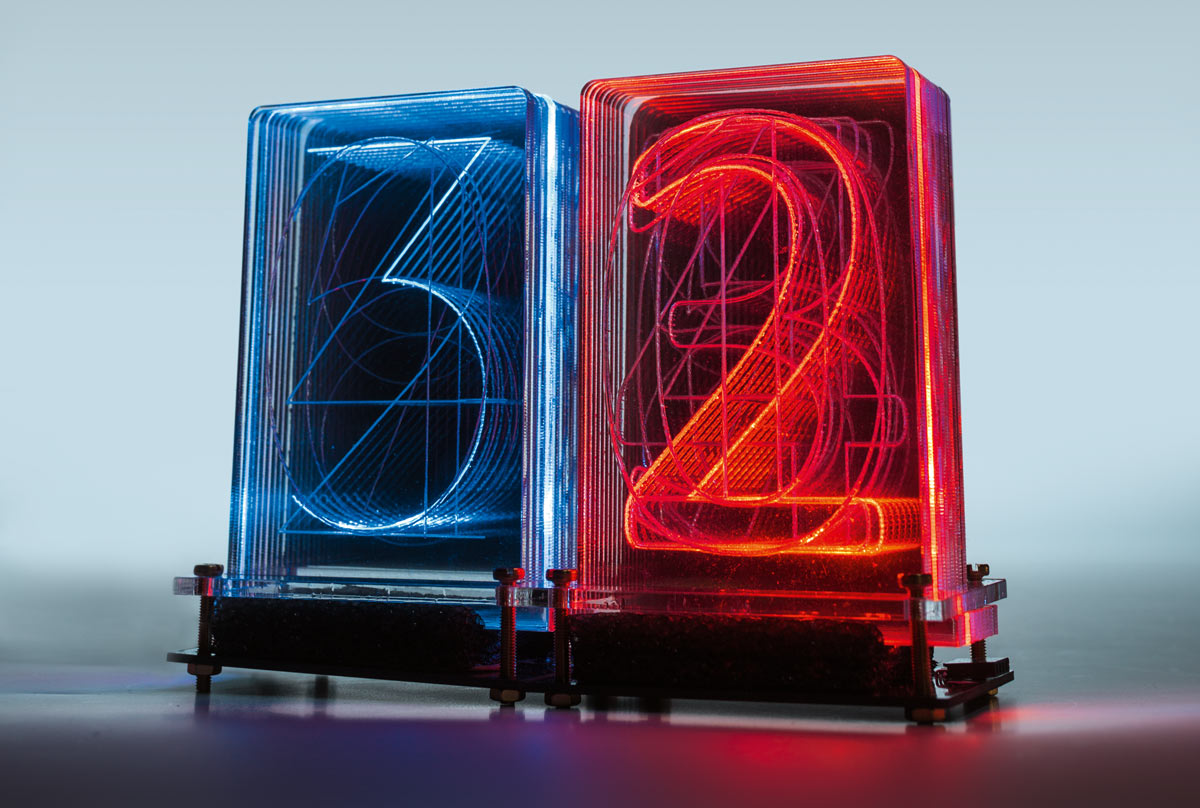
The legendary Nixie tubes are retro and cool — little glowing neon lamps that display numbers or symbols (Figure A). Too bad they’re no longer mass-produced, and the few that are still being made are quite expensive. In addition, they require sophisticated, high-voltage driver circuits. The good news: using multicolor LEDs and acrylic plates engraved with a laser cutter, you can re-create the Nixies’ retro charm, scale them up, and customize the design to your taste. In this project we’ll show you how to make a great-looking “LED Nixie” numeric display with illuminated digits, driven by an Arduino at a safe, cool 5V.

The working principle of the Nixie replica is simple, but effective: Ten transparent plates made out of extruded acrylic sheet (polymethyl methacrylate or PMMA, also known as Lucite, perspex, or plexiglass) are engraved with the numerals 0 to 9. Stacked on top of one another, each plate is illuminated from the edge using multicolor LEDs. Due to the internal refraction of light within the acrylic plate, only the numeral that’s selected will actually light up, while the plates’ surfaces, and all the other numerals in the stack, will remain transparent and colorless.
We didn’t come up with this idea — we’ve seen it demonstrated at Maker Faires in the U.S. and Europe. Connor Nishijima, a maker in Utah, coined the name “Lixie” for his projects, inspiring many other makers.
Our own design aims to show you how easy it is to build LED Nixies and make your own creations. You’ll need only basic Arduino skills, plus some soldering ability to populate the bare PCB.
















